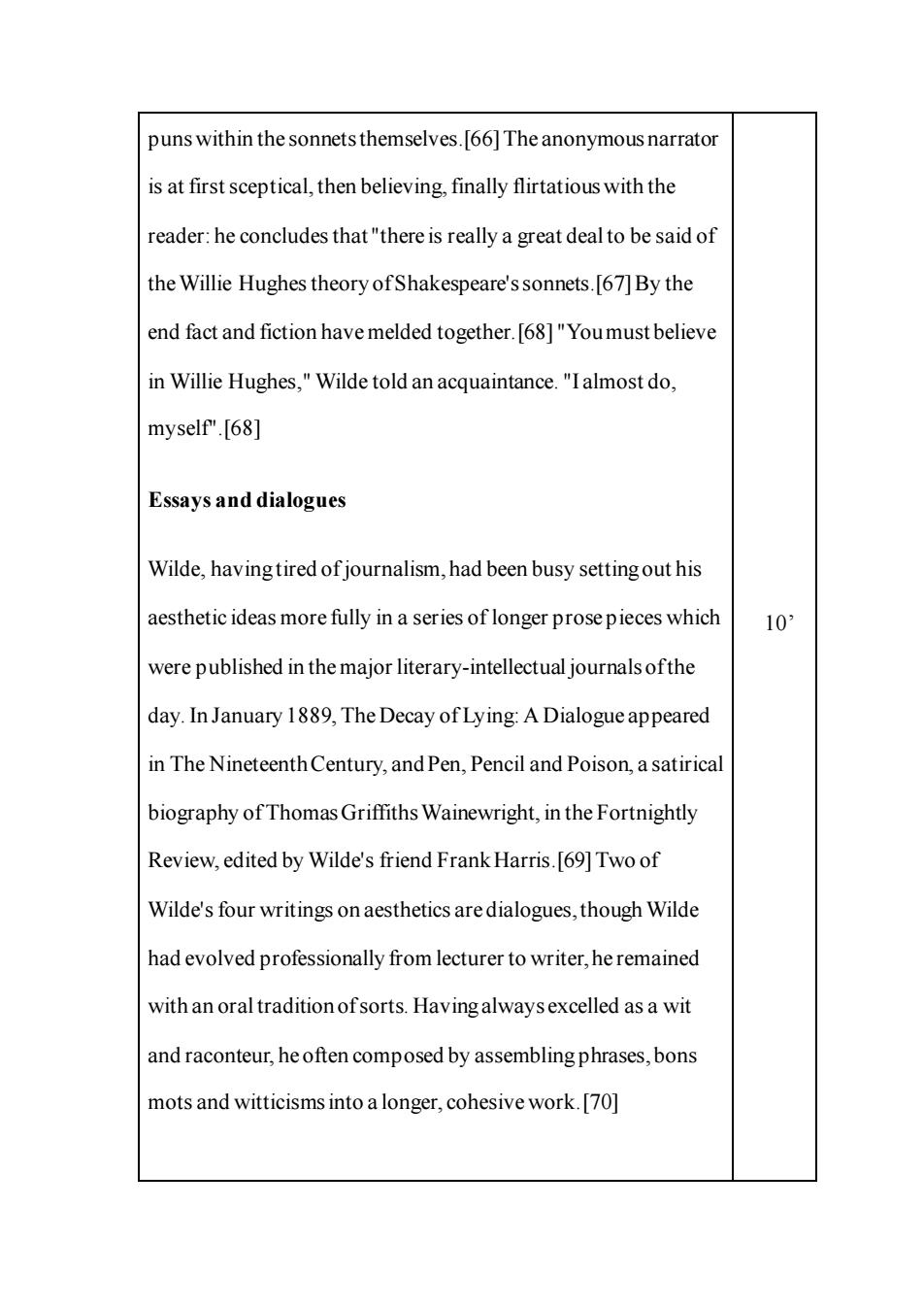正在加载图片...

puns within the sonnetsthemselves.[66]The anonymous narrator is at first sceptical,then believing,finally flirtatious with the reader:he concludes that"there is really a great deal to be said of the Willie Hughes theory ofShakespeare'ssonnets.[67]By the end fact and fiction havemelded together.[68]"Youmust believe in Willie Hughes,"Wilde told an acquaintance."Ialmost do, myself".[68] Essays and dialogues Wilde,havingtired of journalism,had been busy settingout his aesthetic ideas more fully in a series of longer prose pieces which 10° were published in the major literary-intellectual journals ofthe day.In January 1889,The Decay of Lying:A Dialogueappeared in The Nineteenth Century,and Pen,Pencil and Poison,a satirical biography of Thomas Griffiths Wainewright,in the Fortnightly Review,edited by Wilde's friend Frank Harris.[69]Two of Wilde's four writings on aesthetics are dialogues,though Wilde had evolved professionally from lecturer to writer,he remained with an oral tradition ofsorts.Having alwaysexcelled as a wit and raconteur,he often composed by assembling phrases,bons mots and witticisms into a longer,cohesive work.[70] puns within the sonnets themselves.[66]The anonymous narrator is at first sceptical, then believing, finally flirtatious with the reader: he concludes that "there is really a great deal to be said of the Willie Hughes theory of Shakespeare's sonnets.[67]By the end fact and fiction have melded together.[68] "You must believe in Willie Hughes," Wilde told an acquaintance. "I almost do, myself".[68] Essays and dialogues Wilde, having tired of journalism, had been busy setting out his aesthetic ideas more fully in a series of longer prose pieces which were published in the major literary-intellectual journals of the day. In January 1889, The Decay of Lying: A Dialogue appeared in The Nineteenth Century, and Pen, Pencil and Poison, a satirical biography of Thomas Griffiths Wainewright, in the Fortnightly Review, edited by Wilde's friend Frank Harris.[69]Two of Wilde's four writings on aesthetics are dialogues, though Wilde had evolved professionally from lecturer to writer, he remained with an oral tradition of sorts. Having always excelled as a wit and raconteur, he often composed by assembling phrases, bons mots and witticisms into a longer, cohesive work.[70] 10’